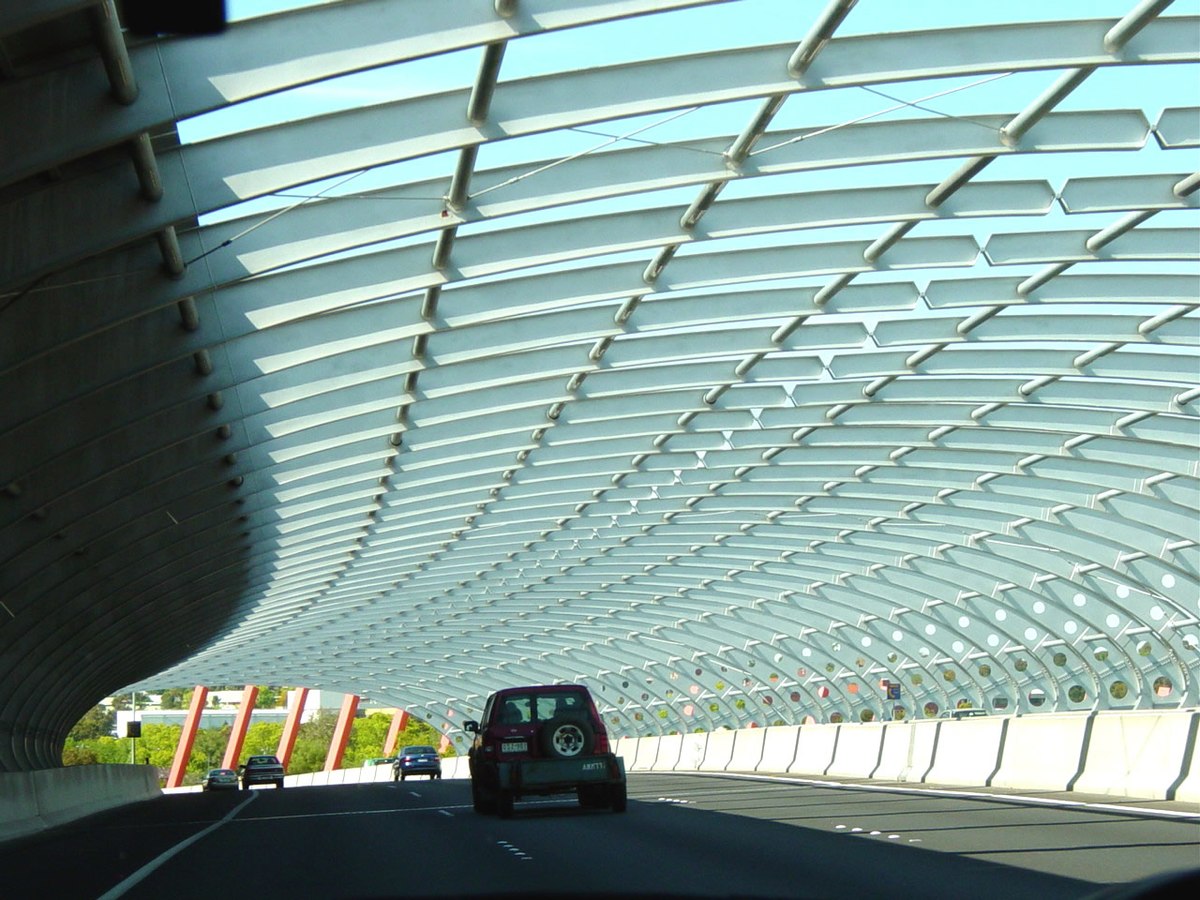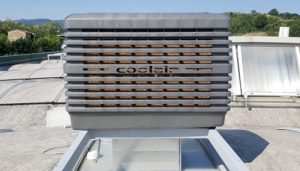
Key Takeaways:
- Noise pollution disrupts daily lives and impacts health
- Sound barriers minimize sound transmission and create a peaceful environment
- Materials like acoustic foam and mass-loaded vinyl enhance sound absorption and soundproofing
- Eco-friendly options like recycled materials and bamboo contribute to sustainability
- Assessing noise sources and complying with local regulations is crucial in the construction
- Design considerations balance the aesthetics and functionality of sound barriers
- Professional installation and regular maintenance are needed for optimal performance
- Upgrading sound barriers can improve efficiency and effectiveness
1. Understanding the Importance of Sound Barriers
Noise pollution has become an ever-increasing problem in today’s modern world. The constant barrage of loud noises disrupts our daily lives and negatively impacts our health and well-being. Creating a quiet and peaceful environment is essential for our overall quality of life. This is where sound barriers play a crucial role.
1.1 The Science of Sound: How Sound Travel Affects Our Environment
Before delving into the importance of sound barriers, it is crucial to understand how sound travels and affects our environment. Sound is a form of energy that travels in waves through various mediums, such as air, water, and solids. Sound waves can be reflected, absorbed, or transmitted when they encounter obstacles.
Understanding the principles of sound propagation helps us comprehend the need for effective sound barriers. Without proper sound insulation, noise can easily penetrate our living and working spaces, causing significant disruptions and discomfort.
1.2 The Negative Impact of Noise Pollution: Health and Well-being Consequences
Noise pollution, often considered an unavoidable part of urban living, severely affects our health and well-being. Prolonged exposure to loud noises can lead to various physical and psychological issues, including sleep disturbances, stress, anxiety, hearing loss, and cardiovascular problems.
According to the World Health Organization (WHO), excessive noise affects our physical health and cognitive and emotional well-being. It can impair concentration, productivity, and communication, hindering our ability to perform tasks effectively.
By constructing effective sound barriers, we can reduce the impact of noise pollution and create a healthier living and working environment for ourselves and future generations.
1.3 Exploring the Role of Sound Barriers: Creating a Peaceful and Quiet Atmosphere
As the name suggests, sound barriers are designed to minimize sound transmission. They shield properties from unwanted noise and create a peaceful and quiet atmosphere.
Sound barriers are commonly employed in various settings, including residential areas, commercial spaces, highways, airports, and industrial facilities. These barriers can be erected along roadways, construction sites, or properties near noisy sources to mitigate the impact of sound.
The effectiveness of sound barriers depends on several factors, including the choice of materials, design considerations, and compliance with local regulations. By understanding these aspects, we can construct sound barriers that effectively minimize noise and create a more tranquil environment.
2. Choosing the Right Sound Barrier Materials
Choosing the right materials is crucial for optimal acoustic performance when constructing sound barriers. The selection of materials depends on factors such as the noise level, the desired level of sound reduction, and the specific application.
2.1 Sound Absorbing Materials: Enhancing Acoustic Performance
Sound-absorbing materials are designed to reduce the reflection of sound waves, thereby minimizing echo and reverberation. Sound-absorbing materials commonly include mineral wool, acoustic foam panels, fiberglass, and perforated metal sheets.
These materials convert sound energy into heat energy through friction and absorption. When strategically placed in sound barriers, they can significantly enhance acoustic performance by reducing sound transmission and improving sound quality.
2.2 Soundproofing Techniques: Blocking External Noise Intrusion
In addition to sound absorption, soundproofing techniques aim to block external noise from entering a space. This is achieved by using dense and heavy materials that act as barriers to sound waves. Common soundproofing materials include concrete, brick, mass-loaded vinyl, and composite acoustic panels.
The effectiveness of soundproofing materials depends on their mass and ability to dampen vibrations. A sound barrier can provide a dual approach to minimizing noise transmission by combining sound absorption and soundproofing techniques.
2.3 Eco-Friendly Sound Barrier Solutions: A Sustainable Approach
While constructing sound barriers, it is essential to consider eco-friendly and sustainable solutions. Environmentally responsible building materials not only contributes to a greener future but also promotes a healthier living environment.
Some eco-friendly options for sound barriers construction include recycled materials, such as recycled rubber or plastics, and renewable resources like bamboo. These materials provide effective sound insulation and reduce the carbon footprint associated with construction projects.
Adopting sustainable practices in sound barrier construction benefits the immediate community and helps mitigate the broader environmental impact of noise pollution.
3. Factors to Consider in Sound Barrier Construction
Constructing sound barriers involves considering various factors to ensure they effectively minimize noise and meet the desired objectives. Each aspect is critical in creating successful sound barriers, from assessing noise sources to compliance with local regulations.
3.1 Assessing Noise Sources: Identifying the Root Cause
Before constructing sound barriers, it is essential to identify the primary sources of noise. Conducting a comprehensive noise survey helps pinpoint the areas with the most significant impact. This information is crucial for determining the appropriate placement and design of sound barriers.
Noise sources can vary depending on the location, such as road traffic, construction activities, industrial machinery, or HVAC systems. By understanding the root cause of noise, sound barriers can be strategically positioned to block or absorb the most significant noise sources.
3.2 Design Considerations: Balancing Aesthetics and Functionality
Sound barriers should provide effective noise reduction and blend harmoniously with their surroundings. Design considerations are crucial to balance aesthetics and functionality.
Architects and urban planners should consider the visual impact of sound barriers on the community. Incorporating design elements such as landscaping, decorative panels, or acoustic art can transform sound barriers into visually appealing structures that enhance the overall ambiance of the area.
The design of sound barriers should also consider factors like height, shape, and orientation to optimize their noise-reducing properties. Sound barriers can become integral components of a visually pleasing and silent environment by striking a balance between aesthetics and functionality.
3.3 Compliance with Local Regulations: Legal Requirements and Permits
Before embarking on sound barrier construction, it is essential to comply with local noise control regulations. Different regions have specific requirements and standards that must be met to ensure the effectiveness and legality of sound barriers.
Obtaining the necessary permits and adhering to building codes and zoning regulations is crucial to avoid legal complications. Working closely with local authorities and sound consultants can help ensure that sound barriers are constructed in full compliance with the relevant regulations.
4. Installation and Maintenance of Sound Barriers
Installing sound barriers is a specialized task that requires professional expertise to achieve optimal performance. Once installed, regular maintenance is necessary to preserve the longevity and effectiveness of sound barriers.
4.1 Professional Installation: Ensuring Optimal Performance
Professional installation of sound barriers ensures their proper functionality and effectiveness. Expert installers have the knowledge and experience to handle different construction methods and materials, ensuring that sound barriers are securely and optimally installed.
It is crucial to follow industry best practices and guidelines during the installation process. This includes proper sealing and joining of panels, strategic placement of sound-absorbing materials, and attention to detail to avoid structural gaps or weaknesses that could compromise the sound barrier’s performance.
4.2 Regular Maintenance: Preserving the Longevity of Sound Barriers
Maintaining sound barriers is vital to ensuring their long-term performance and durability. Regular inspections should be conducted to identify any signs of damage, wear and tear, or potential weak spots in the structure.
Routine maintenance tasks include cleaning, repairing any damages, and replacing worn-out components. It is crucial to address any issues promptly to prevent further deterioration and to maintain the sound barrier’s effectiveness.
Additionally, vegetation near sound barriers should be regularly trimmed to prevent it from obstructing or compromising their function. Proper maintenance contributes to the longevity of sound barriers and ensures their continued ability to mitigate noise pollution effectively.
4.3 Upgrading Sound Barriers: Improving Efficiency and Effectiveness
As technology advances and new materials and techniques become available, it is essential to consider upgrading existing sound barriers. Upgrades can enhance the efficiency and effectiveness of sound barriers, taking advantage of the latest innovations in noise reduction.
Upgrading may involve retrofitting sound-absorbing or soundproofing materials, improving the design for better performance, or integrating advanced technologies for active noise cancellation. Regular assessment and evaluation of sound barriers can determine when upgrades are necessary to keep pace with evolving noise control solutions.
By following professional installation practices, conducting regular maintenance, and considering upgrades when needed, sound barriers can continue to deliver optimal noise reduction in the long run.
Constructing effective sound barriers is essential to creating a quiet and peaceful environment. By understanding the science of sound, the negative impact of noise pollution, and the role of sound barriers, we can appreciate the significance of these structures.
Choosing the right sound barrier materials, considering factors in construction, and ensuring proper installation and maintenance are vital for their effectiveness. Incorporating eco-friendly practices and complying with local regulations further enhance the positive impact of sound barriers.
With thorough planning and attention to detail, sound barriers can transform noisy and disruptive spaces into tranquil environments that promote health, well-being, and overall quality of life.
FAQ
Question: What are sound barriers? – Sound barriers are structures designed to minimize the transmission of sound. They shield properties from unwanted noise and create a peaceful and quiet atmosphere.
Question: How does sound travel and affect our environment? – Sound is a form of energy that travels in waves through various mediums such as air, water, and solids. Sound waves can be reflected, absorbed, or transmitted when they encounter obstacles. Without proper sound insulation, noise can easily penetrate our living and working spaces, causing significant disruptions and discomfort.
Question: What are the negative impacts of noise pollution? – Noise pollution has severe consequences for our health and well-being. Prolonged exposure to loud noises can lead to various physical and psychological issues, including sleep disturbances, stress, anxiety, hearing loss, and cardiovascular problems. It can also impair concentration, productivity, and communication, hindering our ability to perform tasks effectively.
Question: How do sound barrier materials enhance acoustic performance? – Sound-absorbing materials, such as acoustic foam panels and mineral wool, reduce the reflection of sound waves, minimizing echo and reverberation. Soundproofing materials, like concrete and mass-loaded vinyl, block external noise from entering a space. Strategically placing these materials in sound barriers significantly enhances acoustic performance by reducing sound transmission and improving sound quality.
Question: What are eco-friendly sound barrier solutions? – Eco-friendly options for sound barrier construction include using recycled materials like rubber or plastics and renewable resources like bamboo. These materials provide effective sound insulation while reducing the carbon footprint associated with construction projects. Adopting sustainable practices in sound barrier construction benefits both the immediate community and the broader environment impacted by noise pollution.
Question: What factors should be considered in sound barrier construction? – Factors to consider in sound barrier construction include assessing noise sources to identify the root cause, balancing aesthetics with functionality, and complying with local noise control regulations. Understanding the primary noise sources, incorporating design elements that blend with the surroundings, obtaining necessary permits, and adhering to building codes are crucial in creating successful sound barriers.
Question: Why is professional installation and regular maintenance important for sound barriers? – Professional installation ensures the proper functionality and effectiveness of sound barriers. Expert installers have the knowledge and experience to handle different construction methods and materials, providing secure and optimal installations. Regular maintenance, including inspections, cleaning, and repairs, helps preserve the longevity and effectiveness of sound barriers. Upgrading sound barriers when necessary improves efficiency and effectiveness, keeping pace with evolving noise control solutions.
Question: How can sound barriers contribute to a quiet and peaceful environment? – Sound barriers reduce the impact of noise pollution by minimizing sound transmission. They create a peaceful and quiet atmosphere by shielding properties from unwanted noise. This promotes health, well-being, and overall quality of life by reducing sleep disturbances, stress, anxiety, and other negative effects of noise pollution.
Useful Resources:
- World Health Organization (WHO)
- International Institute of Noise Control Engineering (I-INCE)
- Acoustical Society of America (ASA)
- S. Environmental Protection Agency (EPA) – Noise Pollution
- Singapore Building and Construction Authority (BCA) – Guidebook on Acoustic Performance of External Façade
- International Organization for Standardization (ISO) – ISO 12354:2017 Acoustics – Quantities and Procedures for Description and Measurement of Environmental Sound – Part 5: Sound Field Decay in Ordinary Rooms
- European Federation of National Associations of Noise (EFNA)
- Centre for Sustainable Environmental Technologies (CSET)





